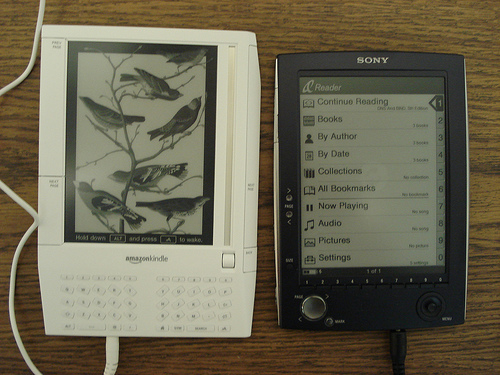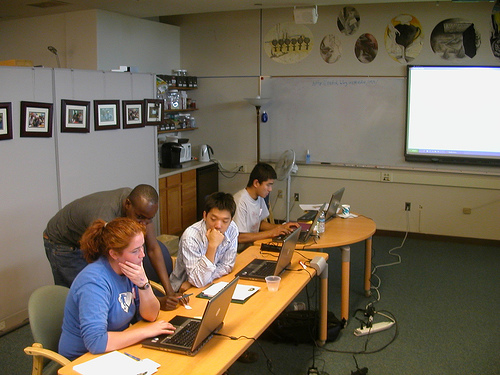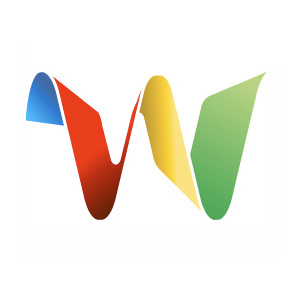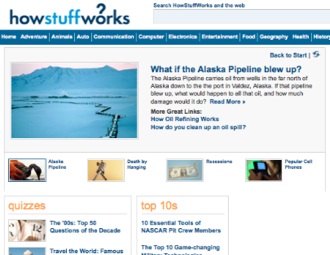Personal Calendar Vs. Event Calendar
Many schools that switch to Tandem have been trying to use a personal calendar like Google Calendar to manage school events. When doing this, it quickly becomes evident why personal calendars are not well suited as an online school calendar. Here are just a few reasons to use a event calendar instead of a personal calendar.
Groups – An event calendar is designed to be used by many people at once instead of a single person. Thus, it has predefined groups that make it easy to schedule events and activities.
One Calendar – While a school may have multiple personal calendars, they should only have one group calendar. I say should because that don’t always but that is a matter of best practice. By doing this, a school is able prevent double-booking of facilities and groups.
Filter Function – An actual event calendar will give you the ability to filter the events on the calendar to just the relevant events. This is a feature the a personal calendar would lack.
It is important to consider these differences when selecting an online calendaring system. These few differences can make a huge difference with how happy your staff, parents, and communities are with your selection of an online calendaring system.
Weebly: Website Creation Tool for Students
 While the digital era was founded on the ideal of universal access, the playing field isn’t always level. Even as access expands, technological skills can lag behind. As schools are discovering, today’s students often have an edge on their teachers, and gaps in technological expertise still remain.
While the digital era was founded on the ideal of universal access, the playing field isn’t always level. Even as access expands, technological skills can lag behind. As schools are discovering, today’s students often have an edge on their teachers, and gaps in technological expertise still remain.
The San Francisco-based website building service Weebly recently debuted a new teaching tool to help fill that gap. Established in 2006 and named to Time’s best website list in 2007, Weebly currently serves over 2 million users. Weebly for Education is the company’s version designed especially with students and teachers in mind.
The genius and beauty of Weebly is its simplicity. By providing a user-friendly website builder that utilizes a basic drag and drop interface, Weebly’s creators are helping to remove the barriers to all that technology offers. Cost is not an obstacle for Weebly users either since the basic service is free.
The school version enables entire classrooms to operate under a teacher account, with individual student passwords and user names and the option of limited or open access for privacy protection. A single basic teacher account can accommodate up to 4 classes of 40 students each at no charge. Premium subscriptions are available for a nominal additional charge (approximately $30 annually). This Weebly Pro upgrade includes customizable features, greater file upload capacity, and the ability to embed documents.
 Beyond affordability and ease of use, Weebly offers a multitude of professional looking free layouts and integrated tools for adding text, photos, and files. The education version includes an assignment feature that facilitates online homework submission. Students benefit from a platform for sharing content and a tool for creating unique portfolios. Besides posting lessons, teachers can add event calendars and newsletters, keeping busy parents informed of day-to-day school activities with the convenience of an online format.
Beyond affordability and ease of use, Weebly offers a multitude of professional looking free layouts and integrated tools for adding text, photos, and files. The education version includes an assignment feature that facilitates online homework submission. Students benefit from a platform for sharing content and a tool for creating unique portfolios. Besides posting lessons, teachers can add event calendars and newsletters, keeping busy parents informed of day-to-day school activities with the convenience of an online format.
Since Weebly’s school tool requires a minimal investment of time and money, there is no real risk in giving it a try. Ostensibly anyone with the most basic computer skills could have their own site up and running within an hour. Weebly tutorials available online provide step-by-step instructions if needed. An added incentive for adopting a web tool like Weebly is that it is in line with Green school initiatives to eliminate paper waste. At the same time it serves as a safe means to establish an online classroom presence at all grade and skill levels.
Wiki Creation Tools For Schools
 WikiSpaces is a Wiki creation site offering a free service that schools can utilize as well as a subscription service for educational systems that wish to have no advertising, unlimited users, and other features. The WikiSpaces site has an effortless sign up process followed by an easy initiation into creating a wiki in the form of several different video tutorials available on the site.
WikiSpaces is a Wiki creation site offering a free service that schools can utilize as well as a subscription service for educational systems that wish to have no advertising, unlimited users, and other features. The WikiSpaces site has an effortless sign up process followed by an easy initiation into creating a wiki in the form of several different video tutorials available on the site.
The editing features on WikiSpaces will be immediately familiar to any school student or school teacher who has used Microsoft Word to type a document as all of the basic commands used to format a wiki page are exceedingly similar in both presentation and design. Linking one wiki page on WikiSpaces to another is extremely simple and allows for quick and easy grouping of content which would be handy in a classroom setting when multiple pieces of content may be interconnected within a lesson plan or learning unit.
![]() PBWorks is a similar platform that can have a school or classroom set up with a “secure online workspace”. Students can immediately begin creating and editing content while the site creator can set customized security settings and create an overall theme for the specific wiki.
PBWorks is a similar platform that can have a school or classroom set up with a “secure online workspace”. Students can immediately begin creating and editing content while the site creator can set customized security settings and create an overall theme for the specific wiki.
PBWorks keeps a complete list of all edits and creations on a particular wiki which allows teachers or administrators to ensure all relevant material remains on site. The audit trail also ensures that anyone who does remove necessary content or adds unnecessary data to the wiki page can be identified and have their actions corrected.
Both WikiSpaces.com and PBWorks.com could be utilized in the classroom as a “class hub” where important assignments can be presented. When a special assignment is handed out, the wiki can become a virtual meeting place for related information and a catalog of handy sources that students can easily reference and access online. Since Wikis are editable by anyone with access to the Wiki, students and teachers can continue to add relevant material as it is gathered and catalog it with new wiki entries and pages.
As education continues to progress and cross into new frontiers, the ability to collaborate virtually is going to become more and more important. Wikis offer a easy and effective way to collaborate and share knowledge in an educational environment.
BioInteractive,  is a free online interactive website created by Howard Hughes Medical Institute (HHMI), one of the leading non-profit medical research organizations in the US. The free award-winning website provides students and teachers with access to fully interactive laboratory modules that allow students to virtually conduct biomedical experiments. HHMI’s web-based collection of online teaching tools and materials encourage students to learn about biology with with free access to podcasts of HHMI researchers’ lectures, animations of biology topics, and other free learning materials. Through the site’s “Ask a Scientist” portal, students can also submit questions on everything from anatomy to DNA.
is a free online interactive website created by Howard Hughes Medical Institute (HHMI), one of the leading non-profit medical research organizations in the US. The free award-winning website provides students and teachers with access to fully interactive laboratory modules that allow students to virtually conduct biomedical experiments. HHMI’s web-based collection of online teaching tools and materials encourage students to learn about biology with with free access to podcasts of HHMI researchers’ lectures, animations of biology topics, and other free learning materials. Through the site’s “Ask a Scientist” portal, students can also submit questions on everything from anatomy to DNA.
Laboratory modules include a bacterial identification lab, a cardiology lab, a neurophysiology lab and a virtual ELISA (Enzyme-Linked Immunosorbent Assay) using human antibodies to diagnose disease. Each module starts with a laboratory intro that provides a detailed overview of the experiment topic.
Using the laboratory notebook and following instructions, students are lead step-by-step through the process of conducting an experiment by clicking on online laboratory equipment. Detailed links and explanations throughout the lab, allow students to understand both the how and why of each step. A glossary section allows students to learn and understand important terms.
Teachers and schools can also order free DVD copies of the site’s videos, animation and lecture podcasts on a wide range of biology topics, including the science of fat, stem cell development and regeneration, and genes and gender.
How To Get Free Digital Books for eBook Readers
The Barnes and Noble Nook Reader, Amazon.com ’s Kindle, and the Sony Daily Edition e-Reader have become valid options for providing books, magazines, and other printed materials to students in school libraries. The new technology behind modern day e-readers and their paper like reading screens currently makes the actual devices somewhat pricey.
’s Kindle, and the Sony Daily Edition e-Reader have become valid options for providing books, magazines, and other printed materials to students in school libraries. The new technology behind modern day e-readers and their paper like reading screens currently makes the actual devices somewhat pricey.
However, the savvy school librarian or teacher can help offset the price of the readers by mining the rich library of free materials that are available for download to the new generation of digital readers. Many of the classic books that are required reading for elementary, junior high, and high school students have public domain versions available for ready download into the e-Reader of choice, and they can be downloaded 100% free of charge.
Free eBooks for the Amazon.com Kindle e-Reader
A quick navigation to the Kindle store section of Amazon allows for an option to view all available Kindle titles. When this option is selected, a drop down menu is available that allows the eBooks to be sorted from price lowest to high which ends up revealing page after page of $0.00 books. Of particular interest to school librarians and teachers will be the reference selections, test prep books, and biography/memoirs of notable persons throughout history.
Free Books for the Sony Daily Edition e-Reader
The Sony Daily Edition e-Reader truly provides a large portion of the world of literature to school students. The public domain books that are available through Google Books can be downloaded to a PC desktop and then placed into Daily Edition. All of these books are free and invaluable. A quick browse through Google Books will bring up familiar favorites and obscure manuscripts that have been archived from university libraries. For students in high school who need multiple source materials for research papers, the Sony Daily Edition e-Reader can be a valuable and near instantaneous method of acquiring facts.
Free Books for the Barnes & Noble Nook e-Reader
Nook has only recently experienced its debut on the consumer market, but it has already made a splash. Along with Nook, Barnes & Noble created a desktop download e-Reader for storage of eBooks and allows “loaning” of books and files to friends through both this download and portable devices which can equate to easy sharing among students. Currently Barnes & Noble offers several free eBooks, including a reference dictionary and classics that are usually required reading in high school. More are sure to come as the device makes a larger impact on the e-Reader market.
All three of the current major e-Readers: Kindle, Sony, and Nook have a variety of free eBooks available for download. Many of these free eBooks are materials any school library can benefit from, and utilizing public domain no-cost versions of classics instead of paying for a contemporary download helps compensate for the price of the actual e-Reader.
Photo credit: http://www.flickr.com/photos/jblyberg/ / CC BY 2.0
Online Tools for Helping Students with Math
Since the first operating syste ms for a consumer PC included a calculator capable of basic functions like adding and subtracting, the student has had a means to work on math homework with a computer. In recent years, this capability has increased numerous times over with the ready availability of numerous online algebraic calculators able to solve complex functions and integrations as well as complete basic problems.
ms for a consumer PC included a calculator capable of basic functions like adding and subtracting, the student has had a means to work on math homework with a computer. In recent years, this capability has increased numerous times over with the ready availability of numerous online algebraic calculators able to solve complex functions and integrations as well as complete basic problems.
Math.com features several different calculators easily accessible on their web-site. The basic calculator features easy commands like addition, subtraction, multiplication, and division while the scientific version can handle exponents, sin, cos, and tan problems. The sites square root tool allows for the easy input of any number into the site provided entry box to have the square root immediately presented. A circle problem solver provides either the area, diameter, or circumference based on the information available. Prime number, quadratic equation, percent, probability, and savings calculators are also present on the site.
In addition to these calculators, Math.com also provides an extensive amount of math problem tutorials to help students learn concepts step by step. Numerous volume and area formulas are provided with diagrams illustrating the various parts of a shape, such as cones, pyramids, and cylinders. With so many areas to explore, Math.com is a one-stop site for elementary school students who need help with their math homework, and it contains the larger portion of information needed for high school math courses.
Mathway.com is another great math site currently available for education use. Instead of providing calculations with a traditional calculator in a virtual format, Mathway allows students to input a math problem into a search box and it provides the answer. You can also view the steps to solve the problem by paying for a premium membership. Mathway can help students in math classes from the basics to calculus, and teachers can access Mathway Classroom Edition BETA. The Mathway classroom edition will allow any educator to set-up an account to manage virtual help for their students when class is not in session.
PC calculators and web-based applications tailored to math teachers and students have come a long way in the past several years and manage to rival the best lower level scientific calculator which equates to a great savings for the budgets of both parents and classrooms if they are utilized in place of a physical calculator. When coupled with the detailed problem solving breakdowns also present online, any student can stay caught up or get ahead in math class with the world wide web.
Photo credit: http://www.flickr.com/photos/nicnolan/ / CC BY-ND 2.0
Applications Of Wikis In The Classroom
There are few students with access to computers who have not utilized a Wiki in o ne form or another. Wikipedia.org’s editable encyclopedia has become a go to source for millions of people looking for quick and current information on a variety of topics while other Wiki applications such as Wetpaint and MediaWiki have opened up the doors for even more community input and creation within the Wiki universe.
ne form or another. Wikipedia.org’s editable encyclopedia has become a go to source for millions of people looking for quick and current information on a variety of topics while other Wiki applications such as Wetpaint and MediaWiki have opened up the doors for even more community input and creation within the Wiki universe.
When it comes to education, Wikipedia.org can be an invaluable tool for a student. While many teachers and schools do not accept Wikipedia as a valid source for school papers or reports due to its editable nature, many Wikipedia pages contain an extensive source or footnotes section of their own which contains links to the URLs where the initial reporting or information can be found. A student doing a research paper on the President or a movie star can use the Wikipedia page as a starting point to fan out to other resources that are easily attributed and 100% school approved.
Wiki technology can also be found at Wetpaint.com which is a website that allows anyone to create their own editable wikis around a topic. Wetpaint provides a domain and the tools needed to have the equivalent of a virtual bulletin board for a classroom. Since these wikis can be adjusted to a private setting that allows access by invitation only, they are a safe way for students to mingle and discuss class relevant topics when away from school.
Pictures and files can be uploaded to Wetpaint, and videos from YouTube can be embedded within a page, making the wikis created on Wetpaint.com perfect for classes that require a lot of visuals such as art, history, and science! The Wetpaint site is also a very good venue for classes with numerous examples of printouts or take home materials such as vocabulary lists or worksheets. These materials can be uploaded to the class site, and then accessed by the student from home.
For schools that have the required servers for operating MediaWiki, an even more advanced option for content creation exists. MediaWiki is a free software application that allows users to create a full Wiki that will greatly resemble Wikipedia.org and the MediaWiki site in terms of appearance and user driven editing. Secondary schools with more advanced computer courses could even consider a collaborative venture on a MediaWiki to be a group or class wide project during a term. A school with a rich history and several different departments may also wish to create a school specific Wiki.
As the demands of providing a well-rounded education increase, so will the capabilities and reach of Wikis. Considering the lack of cost involved in accessing these materials coupled with the benefits they provide to educators and students, Wiki technology can be a perfect fit for many classrooms.
The following websites are both free and educational, spanning the academic spectrum across multiple disciplines and age groups. With a little guidance these sites should help students have a great time while exploring the wealth of knowledge around them.
Howstuffworks is a site is geared toward older kids or teens (or just curious adults), although it is also a great site to use as a resource. Great for those kids who have science based questions about consumer products, current events or just topics adults rarely stop to explain.
2. Factmonster
Factmonster is essentially a searchable encyclopedia for kids. Information can either be found by typing in the search bar or by following the link to various topics, like ‘money’, ‘people’ or ‘sports’.
3. Professor Garfield
At Professor Garfield students will learn about various academic topics with a focus on art and creativity. Students can make their own cartoons and watch videos of artists at work in a number of genres.
4. Funbrain
Funbrain has tutorials and games for such subjects as grammar, math and reading for all grade levels, including more advanced subjects like physics and chemistry. You can search games by grade level or age.
5. BBC Schools Typing
Typing is not a skill that we generally think to teach young children, but it certainly makes sense to start this indispensable skill early. At BBC Schools Typing, kids of all ages can learn to type with the fun tutorials.
6. Try Science
Try Science is an engaging website where kids can do virtual experiments or take virtual field trips related to science. Through the virtual adventures kids get to go through the stars or race across various terrain.
7. Internet4Classrooms
Internet4Classrooms is a comprehensive resource for all academic subjects and is easily navigated according to grade level and subject. Resources and links include both games and supplemental materials.
8. Kidsknowit
Kidsknowit is a network of free sites, each focused on a different academic area. Kidsgeo.com focuses on geology and geography, while Kidsbiology.com explores the human body and at Kidspast.com you can find games that help make history fun and memorable.
9) Kids National Geographic
Kids National Geographic is all the scope and depth of National Geographic brought down to kids size. The kid-friendly site includes dozens of games and activities based on geography, culture, science, adventure, nature and animals.
10. CoolMath4Kids and Cool Math
Coolmath4kids is full of fun puzzles and games designed to help elementary aged kids have fun with math. Coolmath focuses on pre-algebra and beyond and aims to get kids to have fun with math and overcome and negative feelings about difficult math topics.
This post was inspired by Mashable’s 10 Sites to Learn Something New in 10 Minutes a Day.
7 School Tools For Making Your School More Digital
Students growing up in the digital ag e are likely to engage with digital technology in more and more aspects of their life. Part of the role of schools is to prepare students for the rapidly changing world which is quickly becoming more digital every day as new tools emerge to replace things that traditionally didn’t require the use of computers. Here are 7 tools that schools can use to become more digital.
e are likely to engage with digital technology in more and more aspects of their life. Part of the role of schools is to prepare students for the rapidly changing world which is quickly becoming more digital every day as new tools emerge to replace things that traditionally didn’t require the use of computers. Here are 7 tools that schools can use to become more digital.
1. Microblogging
Twitter, has become a popular new communication tool that can be really useful if used the right way. Many teachers, school administrators, and others share valuable information on Twitter via 140 character “Tweets”. One of the most important aspects of Twitter is its integration with SMS, so that users of Twitter can receive messages from people they follow on their cell phones, which almost all teachers, students, and parents carry with them. A principal of a school can send out important messages which can be received by all followers. Twitter also makes it easy to send direct messages to individuals that will be sent to their cell phone as well as their Twitter account that can viewed in a browser.
2. Online school calendars
Calendars are a tool that been used for thousands of years and an online version of the calendar can make calendars more useful. Online school calendars can be accessed from any computer with an internet browser and can be updated in real time when changes occur. This is a major upgrade from a paper based calendar that is usually in one location and can only be updated when a new calendar is printed out and sent out. An online calendar can also provide much greater detailed information, help organize and manage all the schools events, send information to external personal calendars, and many more things that paper calendars can not do.
3. Social networks
Social networks allow for effective communication between groups of individuals online. Facebook for instance allows the creation of groups where individuals can post information, have group discussions, or interact with each other. Yes, there are opportunities for wasting time, but these are outweighed by the benefits of the facilitation of collaboration and communication. Schools can even create their own social networks using tools like Ning.
4. Blogging
Blogging has democratized the publishing of content so that now anyone can write and publish content that will be read by as many people who are interested. Many teachers write blogs to discuss issues in education, share useful educational resources, or engage with students and parents. Students can improve their writing skills by creating their own blogs about topics that they care about. Some free tools that help easily create and publish blogs are Blogger, Edublogs, and WordPress.com.
5. Digital books
There are many advantages of switching to a digital format for books. A digital text book or book is much lighter to carry, which reduces the heavy weight many students carry on their backs. They can be updated more frequently and less expensively when information changes. Digital content also tends to be less expensive, as it reduces the publishers costs to distribute. Many classic books are available for free in digital format. One school has even replaced their entire library with a set of Kindles.
Digital books can be read on laptops, the iPod touch, netbooks, or eReaders like the Kindle or Nook. With the Kindle, students can get access to almost any book in about a minute as well as preview a vast library. The Nook allows a sharing feature so books can be shared between devices for a limited time for certain titles.
6. Wikis
Most people know about Wikipedia, the community driven encyclopedia, but Wikis also have tremendous potential as a collaboration tool. Sites like WetPaint allow you to create a free wiki for your school, a school project, etc. Users can add, edit, or view content to these wikis which can be great for collaboration and sharing information.
7. Online Video/ Podcasts
Students have unprecedented opportunity to broadcast their ideas and creativity by creating videos or audio recordings and publishing them for free on sites like YouTube or Podbean for audio. Students can produce shows, movies, or speeches that can be distributed to a worldwide audience. Some students created a rap video about math that has received over 3 million views. Using Ustream, teachers could broadcast a live recording of a lecture. There are also tons of free online lectures from top universities covering various subjects that are available at Academic Earth, YouTube, and iTunesU.
Can you think of additional tools to add to this list?
Photo by http://www.flickr.com/photos/zappowbang/ / CC BY 2.0
Google Wave is a new service fr om the internet giant that has the potential to greatly enhance the way students communicate with each other when creating group projects for class. Wave combines many of the best features and benefits of other real time editing tools into a near total solution for group work and project development.
om the internet giant that has the potential to greatly enhance the way students communicate with each other when creating group projects for class. Wave combines many of the best features and benefits of other real time editing tools into a near total solution for group work and project development.
When Google Wave is launched a student or educator will immediately be presented with a window where waves are separated into viewing fields in the center and right hand side of the screen. A handy organizer (much like an e-mail folder lit) and contact’s list are present on the left side.
A button aptly labeled “New Wave” will start a new project, and this is where a teacher or student can really begin to utilize the features of this service. If a social studies class project requires four partners to work together to create a presentation, then each of the four students can be quickly added to a new Wave specific to their assignment.
Each participant can log in and out of the Google service from home, school, or a public library while conducting independent research. Videos, pictures, and other attachments can be uploaded directly into the Wave viewing field for quick and easy access to all source materials; this also provides an easy way to back-up all versions of a project!
Wave provides many handy features and keyboard shortcuts that make it an ideal choice for schools where students are encouraged to utilize laptops for note taking and homework assignments. Students can add materials, chat about the progress of a class project, and more after mastering a few quick commands provided in an introductory video to Wave compiled by Google (this video will show up in a sample wave the first time the service is accessed).
Teachers concerned about unevenly balanced workloads within a group project can easily view a Wave with the built-in playback feature and see the development of the Wave (and research) to ensure that all students are properly credited for work done. Teachers can also use this feature to ensure that all participants are behaving according to school rules when communicating with each other in the course of a classroom assignment and to make sure that no instances of cyber-bullying occur. Parents and teachers can also rest assured their students are safe, as Waves can only be viewed by contacts who have been cleared to contribute to the project.
Google Wave provides a tremendous amount of benefits to the teacher or student wishing to maintain a hub for real time project collaboration in a controlled environment. Classroom and school utilization of Google Wave will help students learn the collaborative skills needed to succeed in a business world that centers around social media integration and introduce them to practical applications of technology.
Google Wave demo video:
